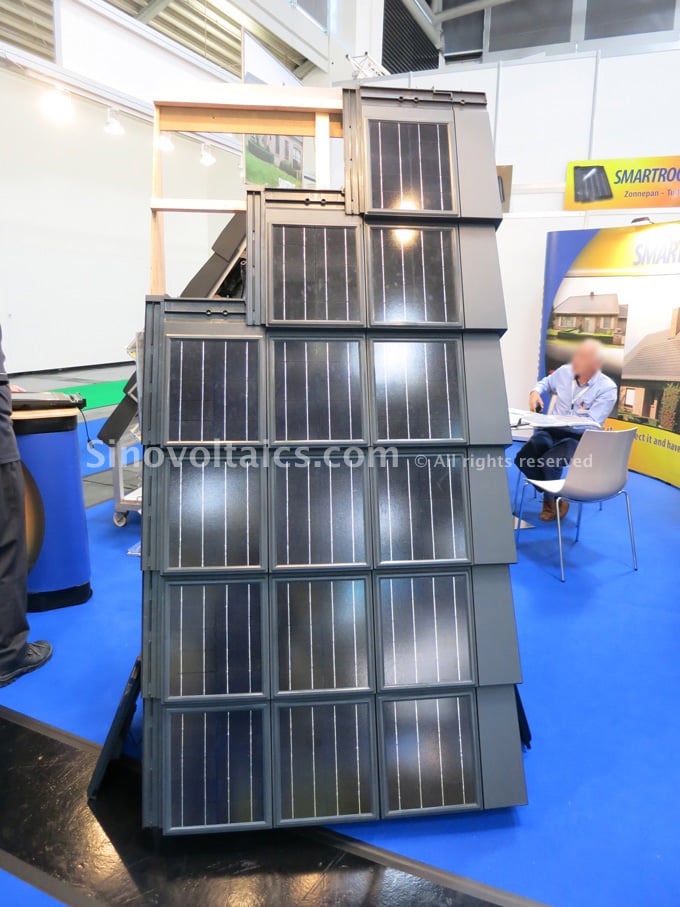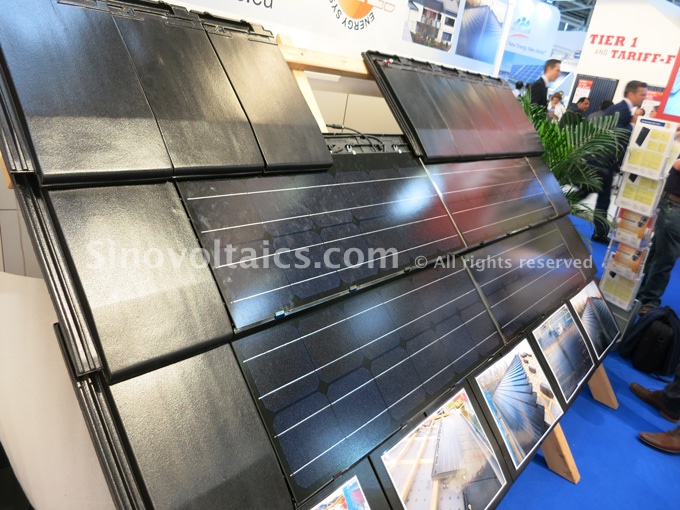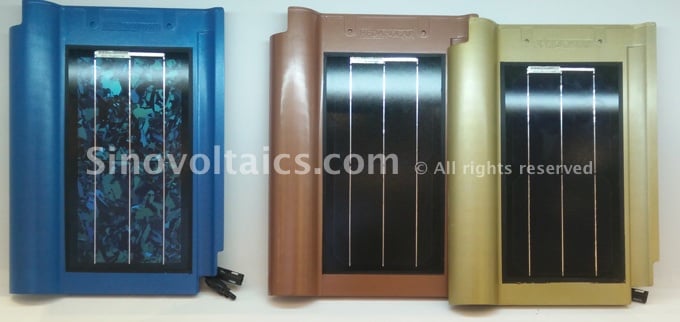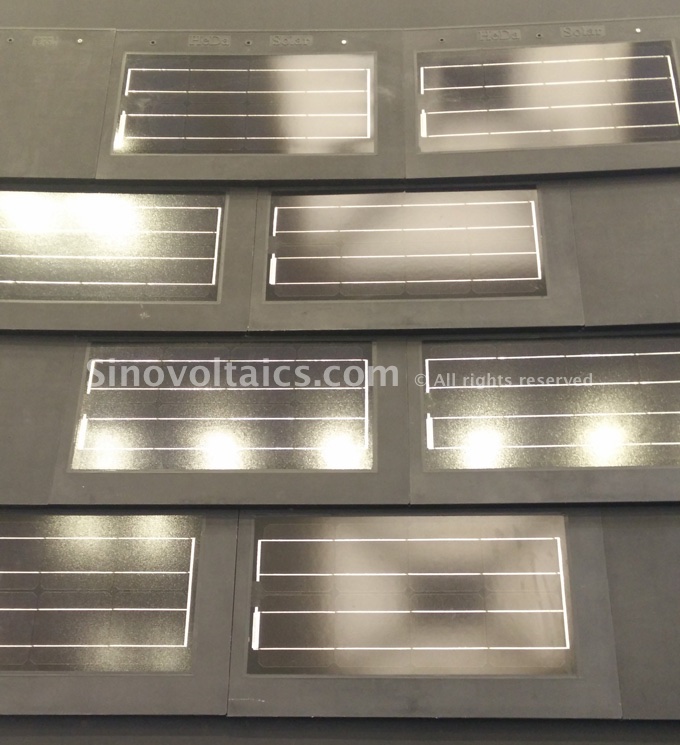Solar PV modules have been around for many years and – attracted by energy savings, generous feed-in-tariffs, or just by the good cause of green energy – many people all around the world equipped the roofs of their houses, carports, or workshops with PV modules and penetrating mounting racks.
Even though global interest in PV is continuously increasing, yet there are many people that are hesitating about the investment into PV systems. They cite either high costs, disbelief in the quality and longevity of the components, roof space, and weight load constraints, or aesthetic reservations.
The potential alternative to those reluctant people can be solar shingles. Solar shingles, also called photovoltaic shingles, solar roof tiles or simply solar tiles, have been around for over a decade, however, they are still unbeknownst to many in the industry, let alone many end users.
In this article, we will go into more depth about the material and technological background of solar shingles, their advantages, and disadvantages and dare an outlook to the future development of this niche PV product.

Solar shingles at Intersolar Munich 2015
Solar shingles: materials and technology
Since the early 2000s, more and more companies have invested and set up manufacturing capabilities to produce solar shingles. While the US-based company DOW Chemicals is one of the leading producers of solar shingles worldwide, other big Asian manufacturers such as Sharp Solar (Japan), Hanergy or Heda Solar (both China) are catching up with their specific solar shingle product solutions.
Solar shingles belong to the category of building-integrated photovoltaic (BIPV) products, combining conventional, mostly flat-type roof tiles with solar cells.
Similar to normal roof tiles, they can be made of asphalt, concrete, ceramics, clay or other tile material such as glass and thus applied on a large variety of different roof structure types, even including the rather exotic Chinese glazed ceramic roof tiles.
Solar shingles contain small digs in which to fit and laminate the thin solar cells, mostly using either CIGS (copper, indium, gallium, selenium) or mono- or poly-crystalline silicon cells, with some manufacturers offering solutions for the latter type being fit with thin low-iron tempered glass like conventional solar modules.
Solar shingles come in various forms and types, such as shingles with integrated solar cells, shingle-shape PV modules that are the size of several conventional shingles, or thin-film shingles with the design and application advantage of added flexibility for architecturally more challenging roof shapes.

Solar shingles exhibited at Intersolar Munich 2015
Why solar shingles and how to install them?
Solar shingles have been created as an aesthetic and integrated alternative to conventional standard photovoltaic system solutions.
Solar shingles can both be used to generate electricity and thus power the in-house loads and/ or feed the grid with the generated electricity or to convert electricity into heat akin to solar thermal energy (STE) systems.
In theory, and depending on a house’s geographic location, roof space, and direction of the roof, efficient solar shingles can fully meet the demands of a building’s electricity usage.
Similar to standard solar PV modules, the solar shingles work as modular units connected with each other in strings. These strings are then connected to an inverter, converting the direct current (DC) power of the solar shingles into household alternate current (AC) power.
Depending on the solar shingle type and material used, the mounting requirements may differ. Some solar shingles have special compatibility and installation requirements, whereas other types can be mixed and fit with normal, non-solar roof shingles.
Advantages of solar shingles
The main advantages of solar shingles are their much lower weight and their arguably more aesthetic roof-integration, being a more low-profile, power-generating add-on than the heavy and clearly visible standard PV modules.
Solar shingles are weather-resistant and meet similar strength and flexibility requirements as conventional roof shingles.
Many manufacturers of solar shingles even offer color-matching solutions for standard black, red, blue, or other roof tile colors with similar solar cell colors. Similar color-matching solutions for standard crystalline PV modules are still comparably more expensive and more difficult to come by.

Selection of colored shingles with integrated crystalline silicon cells
In comparison to standard PV modules, solar shingles serve multiple purposes: apart from a simple generation of electricity or heat and offering better aesthetics, they can also be used as… well, as roof shingles, serving as waterproof barriers and protecting roofs from ingress of external particles.
Moreover, if for structural issues or regulations your house roof is not allowed to be fitted with traditional solar PV modules, solar shingles are a potential alternative to still go solar with your house.
Lastly, another advantage of solar shingles: in environmental terms, solar shingles offer significant savings on materials such when it comes to frames which are usually used for standard PV modules.
Disadvantages of solar shingles
In spite of these many advantages, why do solar shingles have not gained more attention or popularity so far? For a long time, the higher price of solar shingles as compared to standard PV modules has been one of the major barriers.
However, the introduction of CIGS-based solar shingles and reduction in production costs in recent years has led to strong price drops. This brought solar shingles closer to being – in mainstream-economic terms – a serious alternative to standard PV modules.
Also, power output and efficiency are issues to consider. Even though solar shingles could generate a house’s total electricity needs, however, depending on the solar cell technology used with the shingles, they may generate up to 50% less power per square meter than conventional solar PV modules. In such cases, logically more space to generate the same amount of power is required.
Another issue with solar shingles is their difficult cooling. Unlike standard PV modules that are installed above the shingles with a gap for airflow, the solar cells are integrated with the roof tile and thus being closely attached to the roof structure.
For this reason, air cannot easily flow and circulate underneath the shingles for cooling. Proper ventilation needs to be arranged, which however can be a technical challenge. Otherwise, the solar shingles can become very hot, significantly reducing the power output of the solar cells. And: they can heat up the underlying attic as well.
One may argue that because of this missing gap, another advantage of solar shingles is that there is not much room for birds, insects, or other animals to nest and settle there which would pose safety and performance dangers to the system. However, there are nowadays tools available to screen animals from these gaps.
Solar shingles are most cost-effective and make the most sense when being considered during the early stages of building a new house or when re-roofing it, installing solar shingles directly as the house’s new shingles.
The reason for this is that it is more work and time-intensive to install solar shingles than for example standard PV modules: each solar shingle needs to be wired and thus connected to each other – usually indoors – and therefore precise holes in the roof deck must be dug. Such wiring could also be seen in the attic…
It requires precise measuring and is optimally conducted by an experienced installer. Making mistakes in the installation process can significantly drive up costs.
And, in case a solar shingle has quality issues, it cannot be that easily de-installed and exchanged as conventional solar PV modules.
Lastly, for reasonable power yields, the efficient application or solar shingles is constrained to houses with roofs facing south. Solar shingles hardly allow for the (though limited) angle flexibility of standard PV modules which can even be installed and have good power yields on roofs not directly facing south.
Future Outlook
Having only entered the markets a bit more than a decade ago, there are so far no real-world life-time data available for solar shingles but only estimates.
Solar shingles are expected to hold for at least 20 years, similar to the averages of many standard roof tiles, though less than the expectations for conventional PV modules.
Because of the existing cooling problems that add up to the cost/ yield ratio of solar shingle systems, improper solar shingle installations are subject to comparably less power output and quicker degradation, thus making them a potential costly choice when power yields and not aesthetics are of primary concern.
The integration of solar shingles with new solar cell technologies such as PERC (Passivated Emitter Rear Contact) bears however the potential to minimize the heating issue and, with such technology advances, make solar shingles a more and more serious competitor to the old-fashioned PV modules.
TO OUR READERS:
Have you fitted your house with solar shingles and want to share your experience or maybe also some cool pictures? We look forward to hearing from you!







Babatunde Adekoya
on 25 Mar 2018Darcy
on 24 Feb 2016